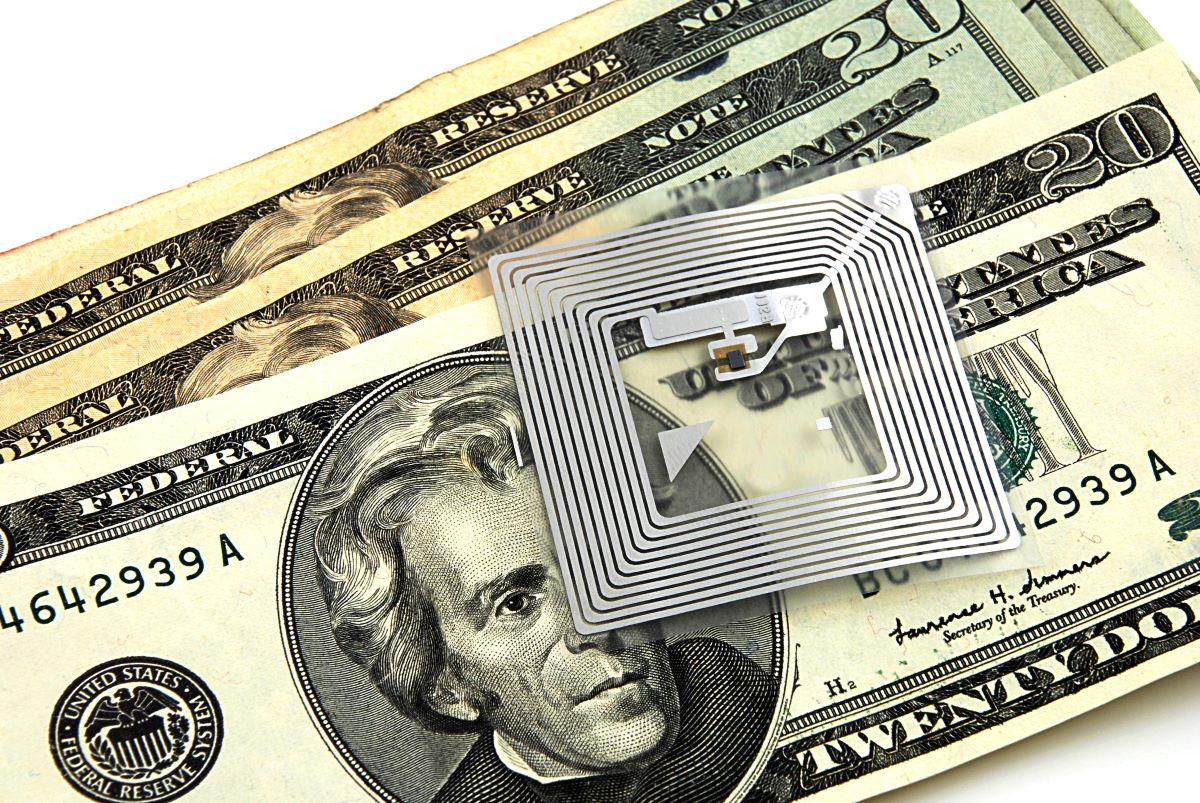Modern-day technological advances are able to change everyday people’s lives for the better. Thanks to the rise of different tools and devices due to years of research and unparalleled labor done by researchers, society today can take advantage of multiple technologies. One of them is Radio Frequency Identification or RFID.
What Is RFID Technology
RFID technology utilizes radio waves to automatically detect and track tags attached to objects, like cards and wallets. An RFID system has three main components: the tag, reader, and antenna.
How does RFID work? When a reader is activated, it emits a radio wave that the tag picks up. The tag then uses this radio wave to power its internal circuit and transmit its unique identifier back to the reader. Next, the reader sends this information to a computer system to track the object being tagged.
Outstanding Applications Of RFID In Finance
RFID technology has a vast range of applications, including in the finance sector. In this post, you’ll learn about the outstanding applications of RFID in various facets of the financial industry. Read on.
1) Contactless Financial Transactions
RFID-enabled bank cards use radio waves to transmit data from the card to a reader. The reader then sends this data to the bank’s payment processing system, which authorizes the mobile or in-store payment. This advanced payment process is said to be more secure and faster than traditional payment methods, such as swiping a card or entering a Personal Identification Number (PIN).
In addition, customers can use their RFID-enabled debit or credit cards to withdraw cash from ATMs without inserting their card or entering their PIN. This makes the withdrawal process faster and more convenient.
RFID trackers can help you track down your wallet if it gets lost or stolen too. The tracker can be attached to your wallet and emit a signal your smartphone can track. This can help you find your wallet even if it is hidden in a large area.
RFID isn’t just for contactless payments because this technology is also useful for contactless wallet tracking. RFID chips are commonly used in credit cards and other forms of identification that criminals use to steal financial information. An RFID tracker can help to block these scans from unauthorized access and track down a lost wallet.
2) Financial Asset Tracking
Many asset-tracking processes in financial companies are still manual, which can lead to errors and inefficiencies. For example, employees may manually enter asset data into spreadsheets or databases, which can be time-consuming and prone to errors.
RFID tags can be attached to cash, checks, and other valuable assets using various methods, such as adhesive, heat, or ultrasonic welding. Once an asset is tagged, it can be tracked using an RFID reader. This allows banks to keep track of the location of their assets, like lost cards and banknotes, at all times, which can help to prevent theft and loss.
3) Compliance, Fraud Prevention, And Security
RFID can help financial institutions to comply with regulations, such as those governing anti-money laundering and know-your-customer. Case in point, RFID tags can help track the movement of bulk cash and other valuable assets.
The Federal Trade Commission (FT) said that almost 2.8 million individuals reported fraud-related incidents in 2021. RFID tags can help prevent fraud, such as counterfeiting and identity theft. For instance, RFID tags can be embedded in banknotes, making them more difficult to counterfeit. These tags can be programmed with a unique identification number to track their movement.
Meanwhile, it’s said that the most common type of cyberattack against banks and financial institutions is phishing. It involves sending fraudulent emails that appear to come from a legitimate source. Other common types of cyberattacks include malware, ransomware, and denial-of-service attacks.
Cyberattacks against banks and financial institutions can significantly impact the economy. For example, the 2017 WannaCry ransomware attack caused an estimated USD$8 billion in damages worldwide. Luckily, one way to prevent and mitigate these security problems in finance is RFID.
In addition, RFID tags can control access to secure certain financial building areas by using proximity readers and turnstiles. For example, a bank might use RFID tags to secure vaults and ATM lobbies, reducing the risk of unauthorized access. As an added layer of protection, a valid smart card is a requirement to enter a highly restricted premise after entering the password or pin code using a mobile phone.

4) Financial Customer Service
Financial institutions should regularly collect feedback from customers about their product and service experiences. This feedback can help identify areas where improvements are necessary.
Henceforth, financial companies embrace digital technology like RFID to improve customer service. For instance, they can help customers check the location of their lost wallets through RFID tracking.
To add, RFID tags can help identify customers and provide them with personalized service. For example, a bank might use RFID tags to identify VIP customers and greet them by name when they enter the branch.
The abovementioned are just some of the most noticeable and appreciated applications of RFID technology in establishments, organizations, and stakeholders in the finance sector. As the world marches onward, along with the advances in technology, expect to see more and more outstanding examples of RFID use in the field.
Conclusion
RFID is a concrete example of how years of research and development end up being useful in multiple sectors, such as the finance sector. With its offerings, it’s regarded that RFID utilization rates are expected to go up as more and more players in the financial industry pay attention to the promises of the technology. The list above showcases some of the most distinguishable and outstanding applications of RFID-powered tools in finance.

































